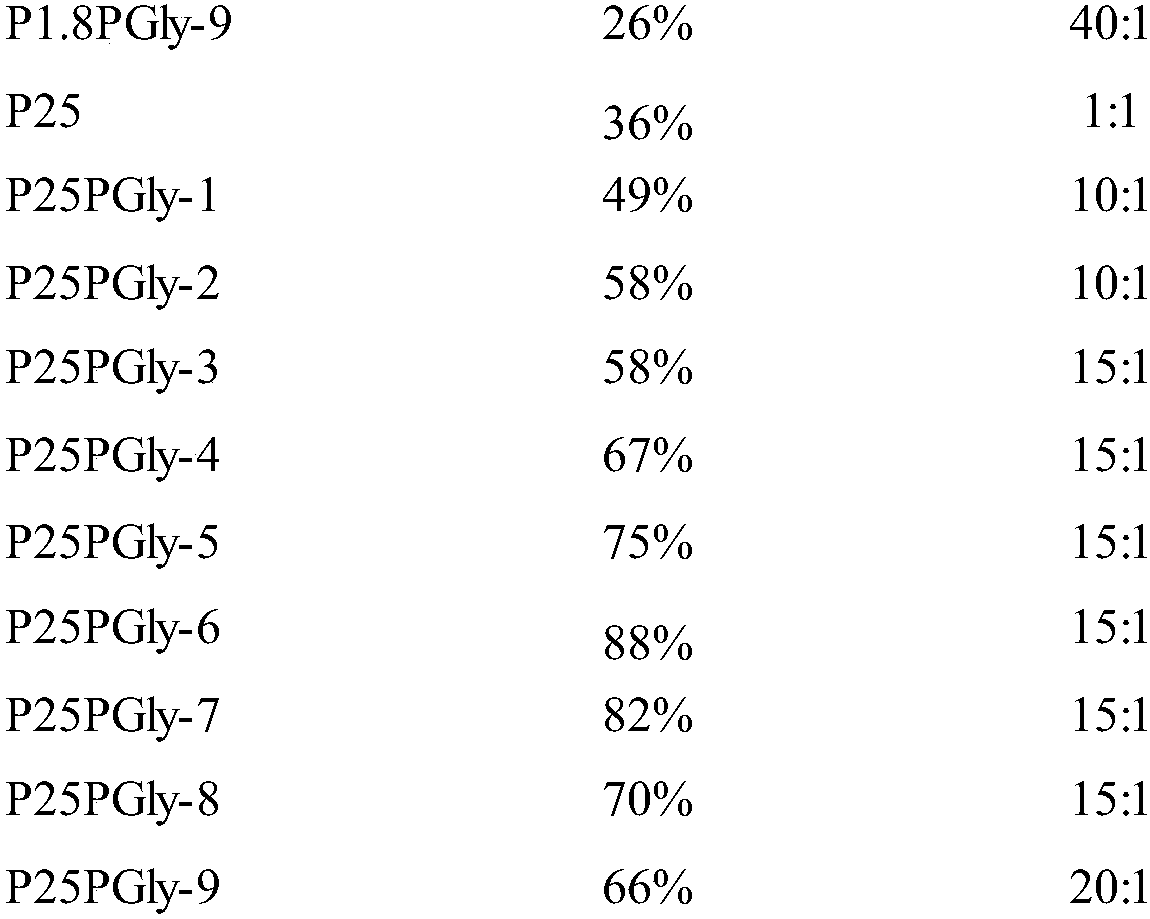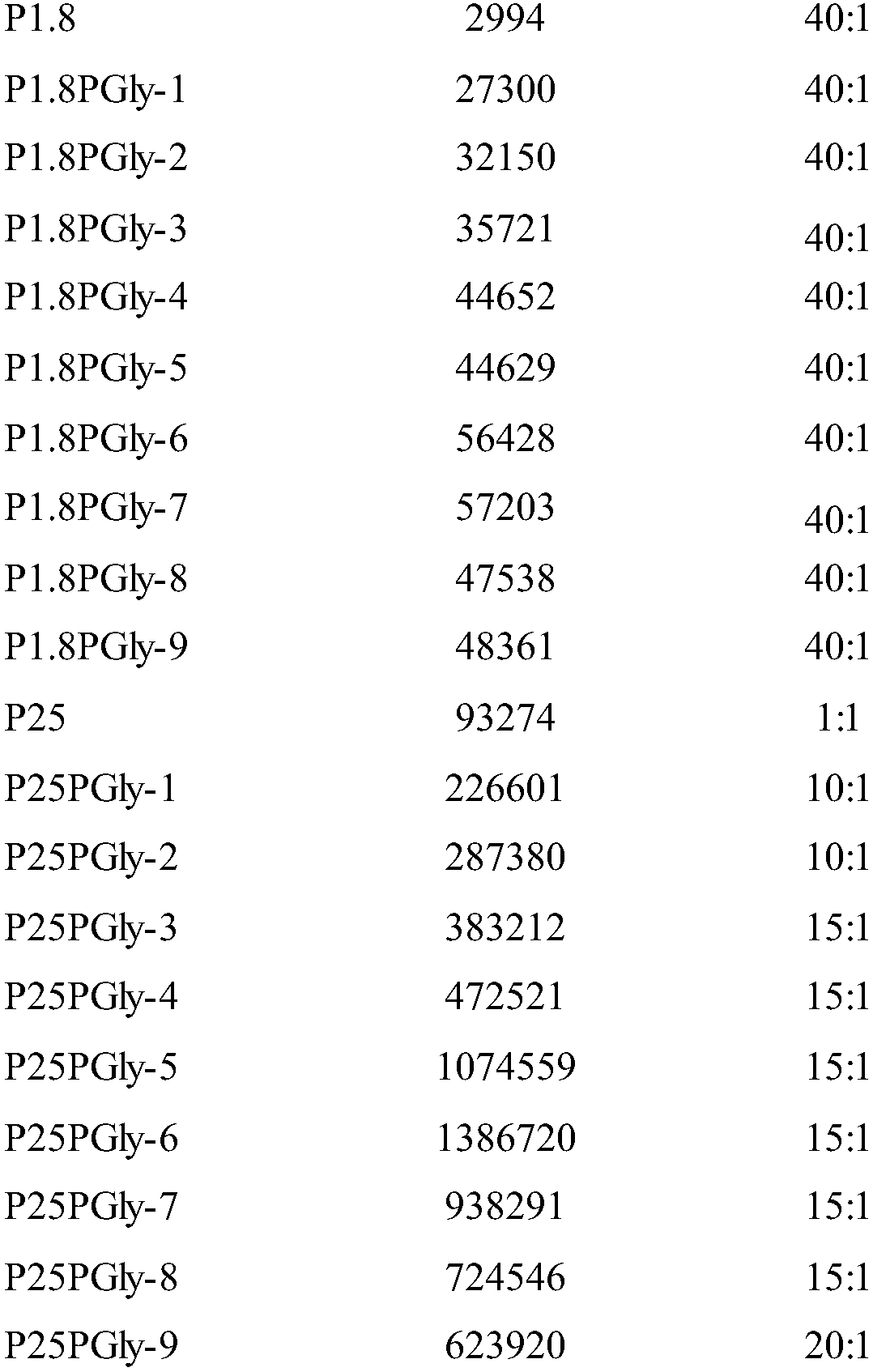Hyperbranched polyethyleneimine-grafted poly L-glycine copolymer and preparation method thereof
A technology of glycine copolymer and polyethyleneimine, applied in the biological field, can solve the problems of troublesome preparation and not much improvement of transfection efficiency, etc.
- Summary
- Abstract
- Description
- Claims
- Application Information
AI Technical Summary
Problems solved by technology
Method used
Image
Examples
preparation example Construction
[0030] The present invention provides a kind of preparation method of the poly-L-glycine copolymer of the hyperbranched polyethyleneimine graft of formula (I) structure, comprising:
[0031] L-glycine N-carboxylic acid anhydride and hyperbranched polyethyleneimine are reacted in solvent, obtain the poly-L-glycine copolymer of the hyperbranched polyethyleneimine graft of formula (I) structure;
[0032]
[0033] Wherein, n1, n2, n3, x, y are degrees of polymerization, 600≥x+y≥40; preferably, 550≥x+y≥50; more preferably, 520≥x+y≥60;
[0034] 3≤n1+n2+n3≤180; preferably 10≤n1+n2+n3≤170; more preferably, 20≤n1+n2+n3≤150.
[0035] Wherein, the polyethyleneimine molecular weight is preferably 1800-25000; more preferably 1900-24000;
[0036] The molecular weight of the poly-L-glycine copolymer grafted with hyperbranched polyethyleneimine of the product formula (I) structure is preferably 2,370 to 35,260.
[0037] In the present invention, at first under anhydrous and oxygen-free c...
Embodiment 1
[0081] The preparation of embodiment 1 polyethyleneimine-polyglycine
[0082] (1) Under anhydrous and anaerobic conditions, according to the mass g of glycine N-carboxylic acid anhydride (Gly-NCA) monomer, mix with anhydrous chloroform, anhydrous dichloromethane or anhydrous N'N'-dimethylformaldehyde respectively The ratio of the volume mL of the amide is 1-100, 1-10, feed the two into a dry reactor, fill with nitrogen protection, stir and dissolve; then dissolve the branched polyethyleneimine as a polyamine initiator in Anhydrous chloroform, anhydrous dichloromethane or anhydrous N'N'-dimethylformamide, and added to the reactor, wherein polyethyleneimine mass g, and anhydrous chloroform, anhydrous dichloromethane or anhydrous The volume of water N'N'-dimethylformamide is mL, and the ratio is 1 to 100, 1 to 10; the mass ratio of polyethyleneimine to Gly-NCA is 1:10-1:120; temperature control is 0 to Stir and react at 50°C for at least 12 hours. After the reaction is completed...
Embodiment 2
[0087] In vitro transfection of pGL3 (luciferase plasmid), pEGFPN1 (green fluorescent protein plasmid) and pCMV-lac Z (-galactosidase plasmid) mediated by polyethyleneimine-polyglycine
[0088] Culture of HeLa cells
[0089] (1) Human cervical cancer cells (HeLa cells) were taken and cultured continuously in culture medium containing 10% calf serum (5% CO 2 , 37°C incubator).
[0090] (2) In vitro transfection
[0091] Within 24 hours before transfection, cells in the logarithmic growth phase were collected, digested with trypsin and diluted with Dulbecco’s modified Eagle’s medium at 1×10 per well. 4 Cells were inoculated in a 96-well culture plate at a density of 37°C in an incubator with a volume fraction of 5% carbon dioxide and continued to culture until the confluence reached 80-90%. For transfection, discard the culture medium in the cell culture plate that was added the day before, wash twice with phosphate buffered saline, and remove the complex particles of genome ...
PUM
 Login to View More
Login to View More Abstract
Description
Claims
Application Information
 Login to View More
Login to View More - R&D
- Intellectual Property
- Life Sciences
- Materials
- Tech Scout
- Unparalleled Data Quality
- Higher Quality Content
- 60% Fewer Hallucinations
Browse by: Latest US Patents, China's latest patents, Technical Efficacy Thesaurus, Application Domain, Technology Topic, Popular Technical Reports.
© 2025 PatSnap. All rights reserved.Legal|Privacy policy|Modern Slavery Act Transparency Statement|Sitemap|About US| Contact US: help@patsnap.com



